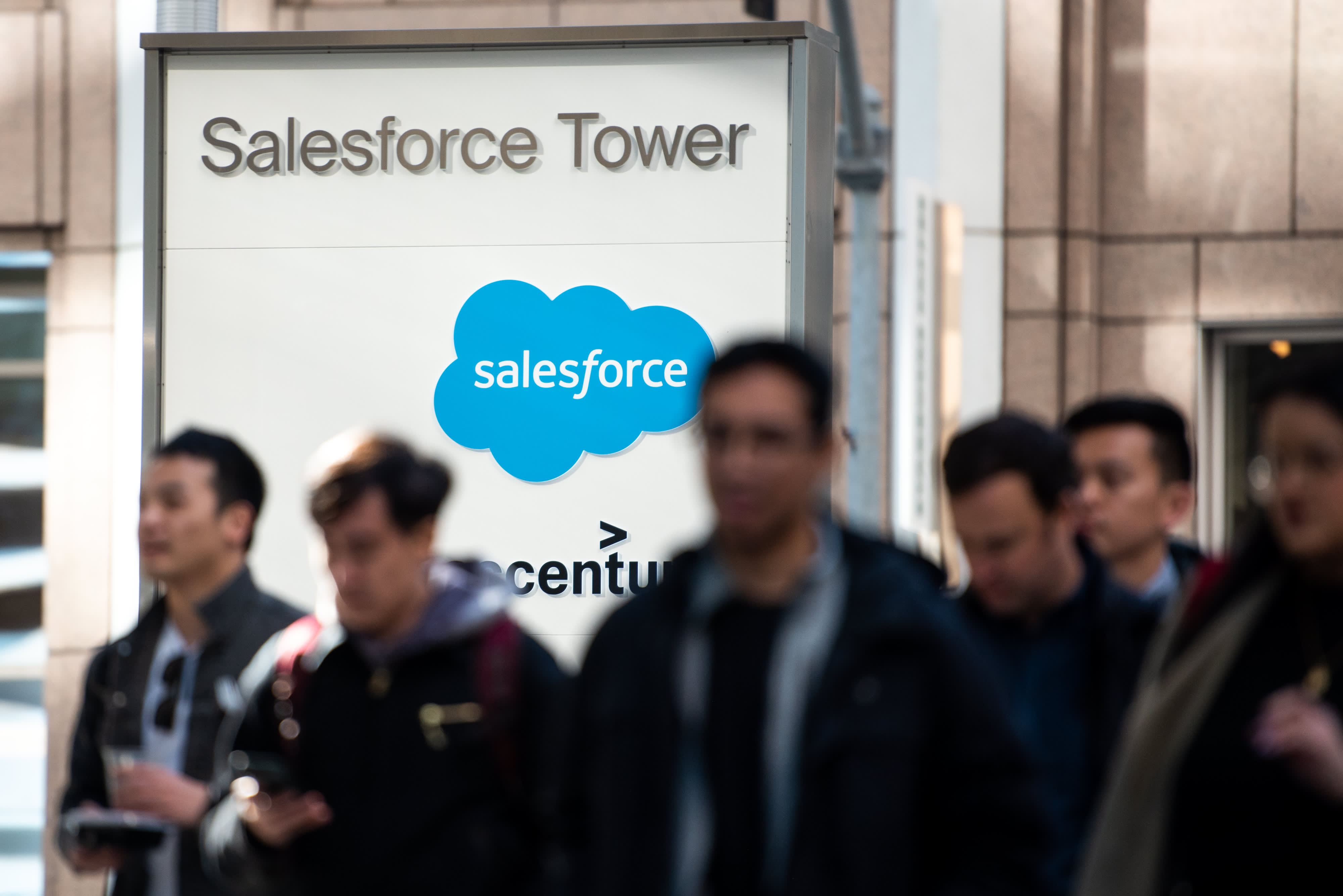
Artificial intelligence has been a big boon for San Francisco real estate. But not enough of one to make up for the broader struggle across the market.
The vacancy rate for San Francisco office space reached a fresh record of 34.5% in the second quarter, according to a report Monday from commercial real estate firm Cushman & Wakefield. That’s up from 33.9% in the first quarter, 28.1% in the same period a year ago and 5% before the pandemic.
Meanwhile, the average asking rent dropped to $68.27 per square foot in the quarter, the lowest since late 2015, down from $72.90 a year earlier and a peak of $84.70 in 2020.
San Francisco is reeling from the twin challenges of bringing people back to the office after the Covid pandemic and a slowdown in the tech market that’s led to mass job cuts across the industry. Tech companies have laid off more than 530,000 employees since the start of 2022, according to the website Layoffs.fyi, with major downsizing at Alphabet, Meta, Amazon, Tesla, Microsoft and Salesforce.
Softening the blow of late has been the soaring popularity of generative AI and the decision by fast-growing startups to open large offices in San Francisco.
OpenAI, the market leader with a private valuation that’s topped $80 billion, announced in October that it was leasing about 500,000 square feet of space in the Mission Bay neighborhood, the biggest office lease in the city since 2018. Robert Sammons, senior research director at Cushman & Wakefield, said OpenAI is continuing to look for more space in the city.
Also last year, OpenAI rival Anthropic subleased 230,000 square feet at Slack’s headquarters. And in May of this year, Scale AI signed a lease for a reported 170,000 to 180,000 square feet of space in Airbnb’s office building.
“San Francisco is certainly the center of AI, but AI is not going to save the San Francisco commercial real estate market,” Sammons said. “It will help.”
While richly capitalized AI startups are signing large leases for new space, the bigger trend is that tech companies, law offices and consulting firms are looking to reduce their footprint when existing leases come up, Sammons said, reflecting the widespread move to hybrid work.
In many cases, companies are looking to relocate to higher quality space in more desirable parts of the city, because prices have come down and employers need to be near restaurants and shops to get staffers to come back, Sammons added.
“The best quality trophy space continues to perform well, because tenants want to be in the best locations with the best amenities around them,” Sammons said.
Some of the city’s top employers, including Salesforce, Uber, Visa and Wells Fargo, have brought employees back to offices for part of the week. That’s helped in the financial district, where the vacancy rate is still 34.2% on the north side and 32.7% on the south side at the end of the quarter. In SoMa, which historically was a popular area for venture-backed startups, the vacancy rate is almost 50%.
SoMa is further away from mass transit options and has also been hurt by large retail departures. Vacant office space across San Francisco for the quarter totaled 29.6 million square feet, Cushman & Wakefield said.
The firm said in its report that there are positive signs in the market, with absorption poised to improve in the second half and office job numbers stabilizing following a steep drop-off. But Sammons said it looks like there’s more room for rents to fall and for vacancies to rise. Uncertainty surrounding the upcoming presidential election may be a factor delaying new leases, he said.
“Sometimes tenants postpone making decisions when there are major elections,” he said.
WATCH: Commercial real estate vacancies in San Francisco are at an all-time high

